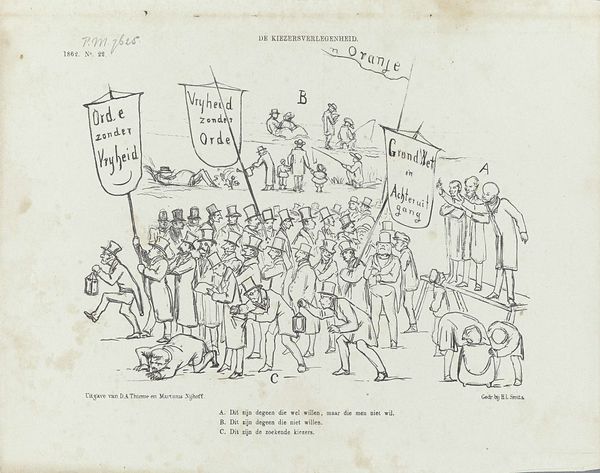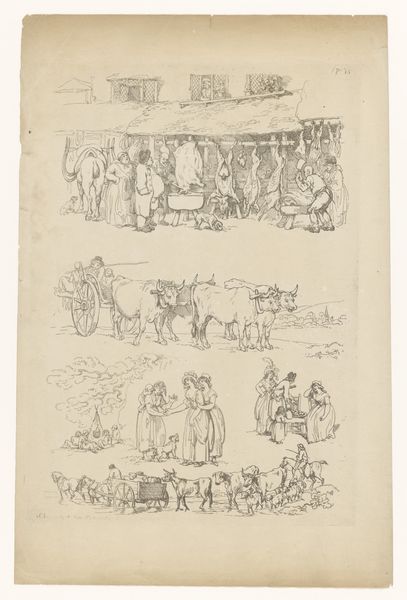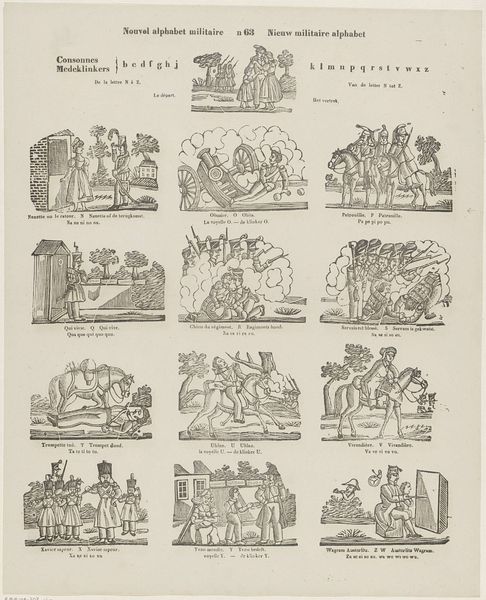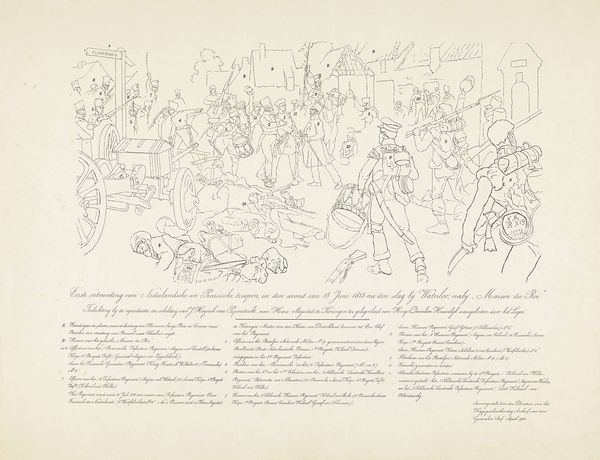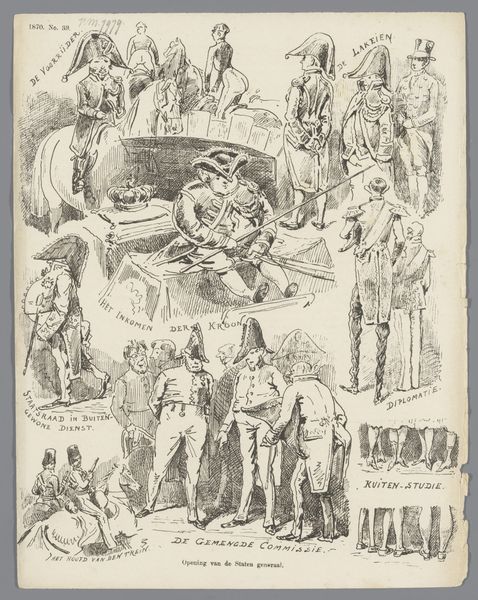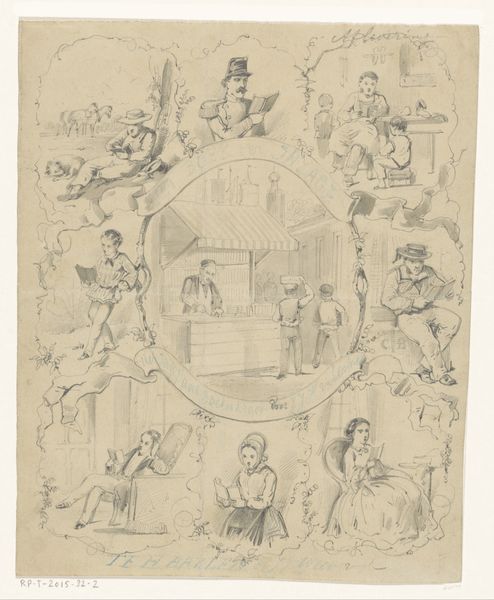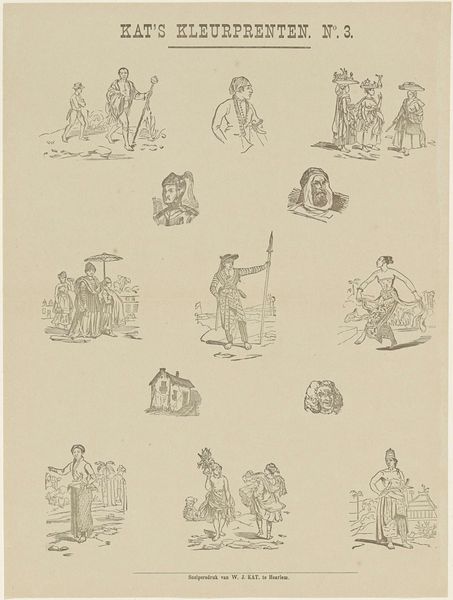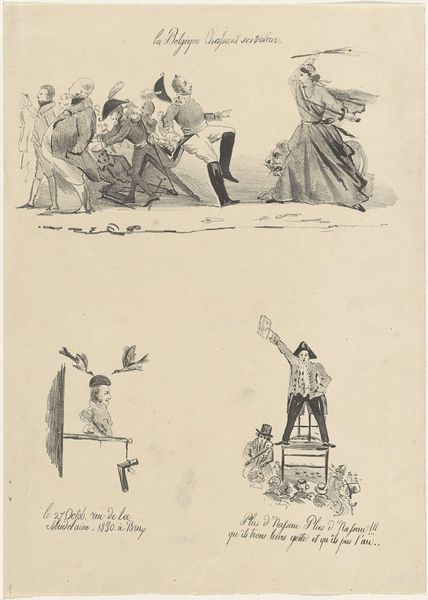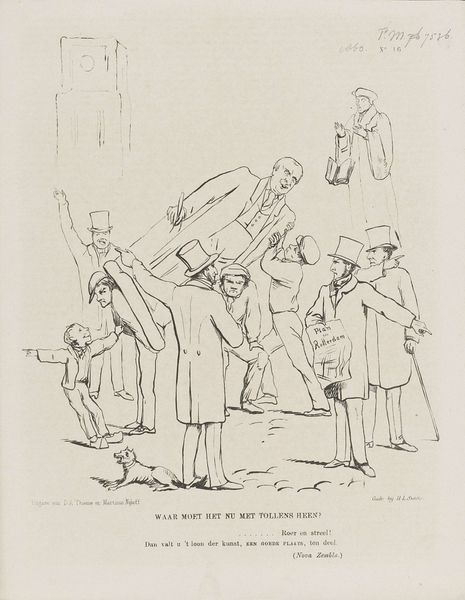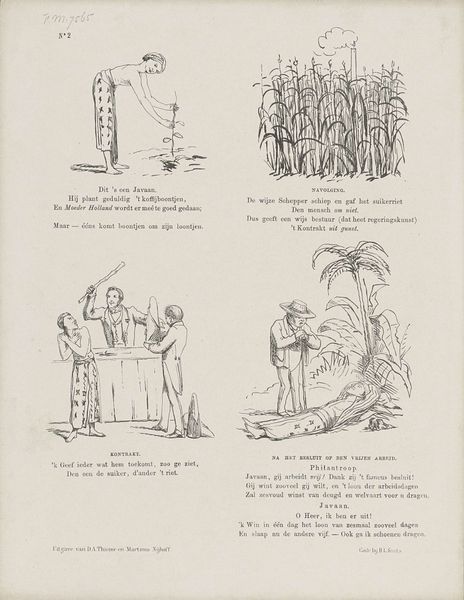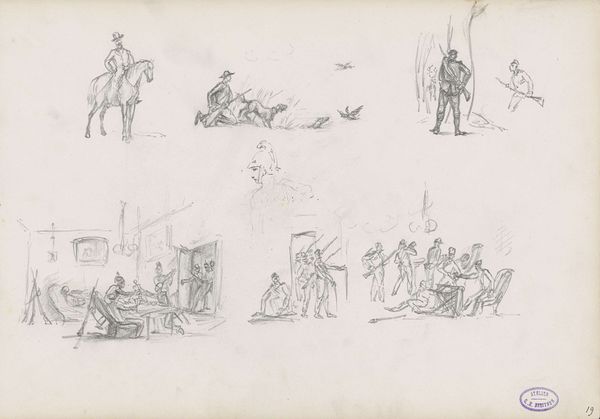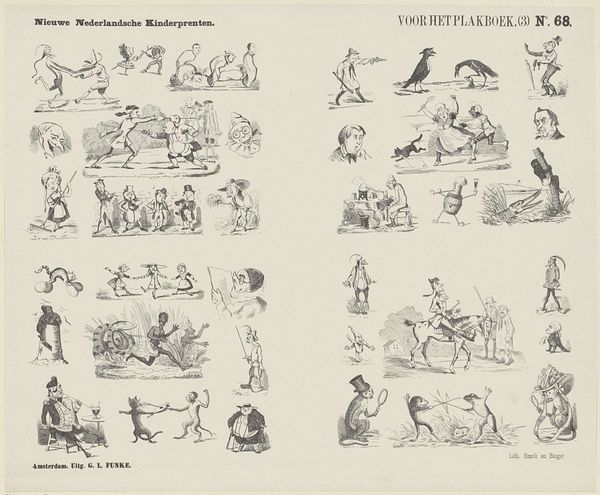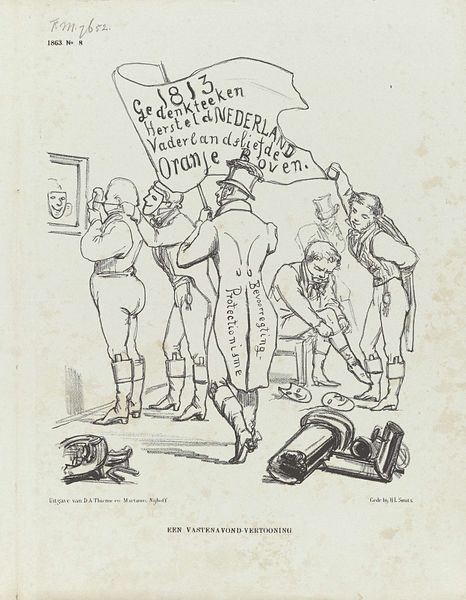
drawing, print, etching
#
drawing
#
comic strip sketch
#
imaginative character sketch
#
quirky sketch
#
narrative-art
# print
#
etching
#
figuration
#
personal sketchbook
#
idea generation sketch
#
sketchwork
#
thumbnail sketching
#
sketchbook drawing
#
genre-painting
#
storyboard and sketchbook work
#
sketchbook art
Dimensions: height 427 mm, width 343 mm
Copyright: Rijks Museum: Open Domain
Curator: Hermann van der Moolen, a name less known today, created this etching titled "Kermis-tooneelen," sometime between 1838 and 1892. The print teems with scenes from a carnival, almost like a page torn from a child's storybook. What strikes you initially? Editor: There's a playful energy, but also a sense of detachment. The light etching feels whimsical. Each vignette almost floats, ungrounded, evoking the ephemeral nature of street performance and spectacle. Curator: Absolutely. Placing this work within the rise of print culture during the 19th century offers context. These affordable prints made narratives accessible, democratizing art in a way, reflecting the daily lives and entertainments of a growing public sphere. Each miniature tableau invites critique about the very idea of popular culture, gender roles, and even child spectatorship. Editor: The symbolism intrigues me. Consider the prominent depiction of performers: the juggler, the musician, the animal handlers with their performing bear. These echo age-old archetypes of spectacle, their presence on a printed sheet collapsing time. There’s continuity in these images, revealing enduring human fascination with the unusual and the skillfull. Even a deeper sense of the bestial lurking beneath our veneer of civilisation is apparent. Curator: I see the presence of children, often positioned centrally, not merely as innocent viewers. These prints might function didactically. How does societal values impact what a child perceives? Where the money goes at a carnival? Who has the priviledge to consume? Editor: Interesting. Note, too, how each scenario, framed within the larger print, functions as its own miniature stage. A contained performance of values, perhaps, where symbols of both control and subversion coexist— the leashed bear, the clownish drum player... Curator: Ultimately, examining "Kermis-tooneelen" allows us to consider questions around labor, leisure, and social stratification. It really acts as a mirror of its time! Editor: It also becomes clear how images function across generations and in vastly different circumstances, carrying resonant symbolism that transcends its historical origin. Thanks to Van der Moolen, we can examine both what’s changed and what remains fundamentally unchanged in the carnival of our lives.
Comments
No comments
Be the first to comment and join the conversation on the ultimate creative platform.
